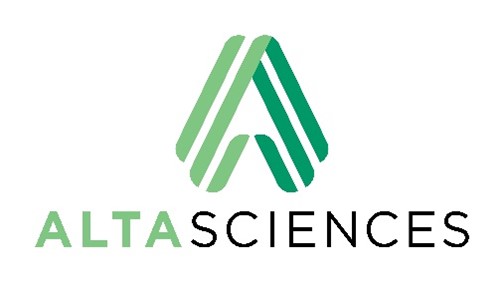ACT Corporate Member Message: Altasciences—Proud Corporate Partner
Microsampling - Making A Difference in Drug Development

Microsampling Volume
Blood microsampling is a less invasive and simplified alternative to traditional venipuncture, and provides significant advantages in preclinical and clinical studies alike. A traditional blood draw takes approximately 2.5 mL of blood, while a microsample takes only approximately 1/1000 of that amount, 10 to 20 µL (microliters). Some techniques can even go as low as 5 µL. These low-volume blood draws reduce stress on animals during preclinical research, and on human volunteers during clinical trials.
Preclinical Applications of Microsampling
When it comes to preclinical research, microsampling allows for the use of the same animal over a series of blood draws, resulting in fewer animals per study. Microsampling means that the animals used in a study experience less adverse events related to blood draws, and they recover more quickly. It also facilitates the bioanalytical elements of the study by reducing the confounding influences of data compilation required when satellite animals are involved.
Get more insight with our new poster on preclinical strategies in rodents studies using Volumetric Absorptive Microsampling (VAMS®) presented during the 42nd American College of Toxicology Annual Meeting.
Download poster
Clinical Applications of Microsampling
In clinical trials, microsampling makes the blood draws stress free for participants. One type of microsampling technology applies a small unit to the upper arm, which allows participants to draw a tiny amount of their own blood by simply pushing a button. This can be done anywhere, and participants in remote areas do not need to travel to the clinic for blood draws. The technique facilitates study participation for the elderly, those with mobility restrictions, who are more easily able to sample from the comfort of their own homes. Children and neonates can be sampled simply and painlessly. Needle phobia is virtually eliminated, and participants who took part in a survey reported that the simplicity and ease of the process makes them more willing to participate in, and stay involved in, future clinical trials.
Operational Considerations
From an operational and scientific perspective, microsampling provides a painless, straightforward process for in-clinic blood draws, which benefits both participants and clinic staff. There is less complexity around cold chain shipping and storage compared with traditional blood samples, which need to be temperature controlled to ensure their integrity.
Bioanalytical expertise
Altasciences has the most advanced, sensitive, and selective bioanalytical capabilities for microsample analysis, and we continue to innovate and adapt as the technology evolves.
Altasciences - Bioanalysis Services - Microsampling
Our Experience and Resources
To speak to one of our experts about how microsampling can benefit your programs, contact us today info@altasciences.com.
Download The Altascientist |